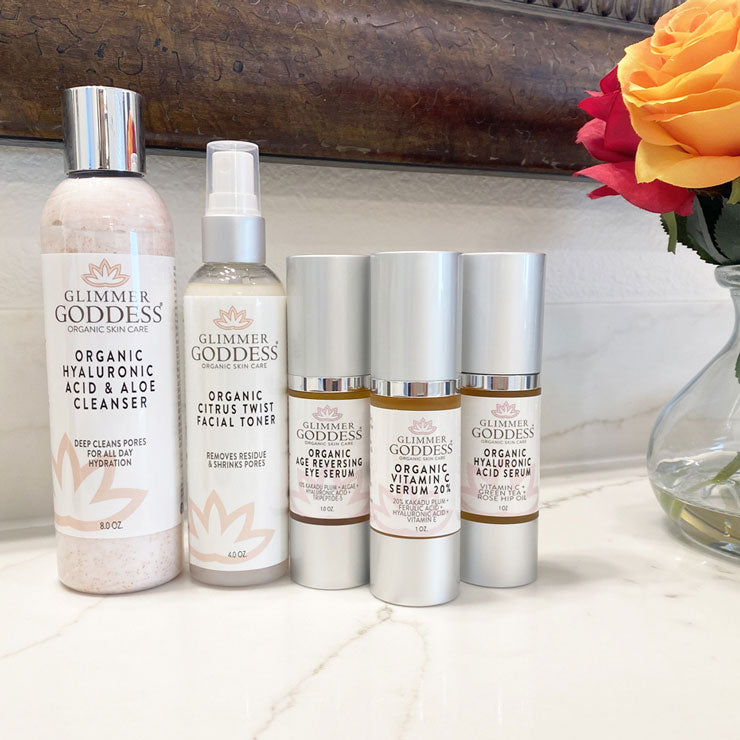
Organic Self Tanning Lotion Guide: Tips & FAQs
Organic Self Tanning Lotion: Your Complete Guide to a Natural, Golden Glow
Whether you want a subtle bronzed look or a deeper tan with daily builds, choosing the right self tanner and applying it correctly makes all the difference. Below are practical answers to common questions shoppers ask, plus tips for prepping skin, fixing mistakes, and getting great results—especially if you have fair skin or want to tan your face safely.
What should I know when looking for the best self tanner at Walmart or any store?
Store availability matters less than the formula. When shopping at big retailers, focus on:
- Organic or naturally-derived formulas if you prefer cleaner ingredient lists.
- Clear DHA details—use lower percentages for subtle color, higher for faster, deeper results. DHA is permitted by the FDA for external use in sunless tanners; avoid inhalation/ingestion and mucous membranes. :contentReference[oaicite:0]{index=0}
- Hydration boosters (aloe, glycerin, hyaluronic acid) to prevent patchy fade.
- Reviews/photos from people with a similar skin tone to yours.
Many drugstore and mass-market options perform well if you follow good prep and application steps. For a clean, skin-loving option, consider an organic self tanner formulated to hydrate and develop gradually:
How do I fix an orange spray tan or orange-toned self tan?
An orange cast often comes from uneven application, too-high DHA for your skin tone, product oxidation, or pH issues. Try these fixes:
- Gently exfoliate with a scrub or exfoliating mitt, then moisturize.
- Use a mild AHA body wash (glycolic/lactic) a few days in a row to speed fade; patch-test first.
- Spot-correct with a paste of baking soda + water; rinse and moisturize.
- For immediate blending, mix a little body lotion with a wash-off bronzer and buff over edges.
Prevention: exfoliate before application, use a mitt, and pick a formula/pH that suits your skin; acidic pH (~5–6) tends to develop more natural color, while alkaline conditions skew more orange.
Which drugstore self tanners are best—and what should I look for?
- Gradual lotions if you’re cautious about depth.
- Moisturizing ingredients so color fades evenly.
- Neutral/olive guide tones (avoid overly orange bronzers).
- Fast-drying, low-transfer options if you’ll dress quickly.
With proper prep and thin layers, most formats (mousse, lotion, drops) can last 3–10 days. :contentReference[oaicite:2]{index=2}
What’s the best self tanner for fair skin?
Fair and porcelain complexions usually look most natural with lower-DHA, cool- or neutral-leaning formulas. Choose “light/fair” shades, build gradually over several days, and patch-test on the inner wrist or ankle before full application.
Can I use self tanner on my face? Face-safe steps
The face is more sensitive and often needs a lighter-DHA product (or fewer drops). Dermatologists advise exfoliating first, moisturizing dry areas, and applying sparingly with a clean sponge or mitt—then wearing sunscreen daily (self-tan does not provide UV protection). :contentReference[oaicite:3]{index=3}
Facial self-tanning steps:
- Double-cleanse and gently exfoliate the night before.
- Moisturize dry areas (sides of nose, under eyes) lightly to prevent over-absorption.
- Use a pea-sized amount or a few drops mixed into moisturizer; blend outward with a sponge or mitt.
- Avoid eyes, nostrils, lips, and hairline; feather edges.
- Wear SPF daily; self-tan ≠ sunscreen. :contentReference[oaicite:4]{index=4}
Prep, application, and maintenance
Prep
- Exfoliate thoroughly (but gently) 24 hours beforehand; shave/wax ≥24 hours before tanning.
- Right before, lightly moisturize dry spots (knees, elbows, ankles, hands, feet).
Application
- Use a tanning mitt; work in circular motions.
- Apply thin, even layers and build gradually for a natural depth.
- Let it dry before dressing; follow product-specific rinse times.
Maintenance
- Moisturize daily and avoid harsh scrubs; pat skin dry after showers.
- Most self tans last 3–10 days depending on prep, formula, and your routine. :contentReference[oaicite:5]{index=5}
Ingredients to look for (and to avoid)
Helpful:
- Dihydroxyacetone (DHA)—the color-forming agent in most self tanners; permitted for external use in cosmetics. :contentReference[oaicite:6]{index=6}
- Hydrators like aloe, glycerin, hyaluronic acid for smoother fade.
- Soothers/antioxidants (green tea, vitamin E) for comfort and glow.
Use with care:
- High fragrance if sensitive—choose lightly scented or essential-oil based options.
- Drying alcohols—can accelerate patchy fade if overused.
Quick FAQ
How long does a self tan last?
Typically 3–10 days, depending on skin prep, how often you shower/exfoliate, and the product type. Hydrating formulas fade more gracefully. :contentReference[oaicite:7]{index=7}
Can I shower after applying?
Yes—after the product’s recommended develop time (often 2–8 hours). Gradual lotions can be left on overnight for best results.
What is the least toxic “fake tan” option?
Use externally-applied lotions, mousses, or drops with DHA used as directed (avoid inhalation/ingestion and mucous membranes). DHA is allowed for external cosmetic use by the FDA; DHA-free alternatives exist if you prefer them. :contentReference[oaicite:8]{index=8}
What’s the best fake tan for older skin?
Look for creamy, hydrating, gradual formulas with humectants and emollients, and apply in thin layers over well-moisturized skin to avoid texture settling.
What’s the golden rule of (self) tanning?
Prep + thin, even layers + patience—then always wear sunscreen, because self-tan does not protect from UV. :contentReference[oaicite:9]{index=9}
What does Jennifer Aniston use for self-tanner?
Celebrities rarely disclose a single, exclusive product and routines change often. Rather than chasing a name, match formula and DHA level to your skin tone and desired depth—and follow dermatologist-backed application steps. :contentReference[oaicite:10]{index=10}
Derm-backed resources
- FDA: Sunless Tanners & Bronzers (use & safety guidance). :contentReference[oaicite:11]{index=11}
- eCFR: 21 CFR 73.2150—Dihydroxyacetone color additive use. :contentReference[oaicite:12]{index=12}
- American Academy of Dermatology: How to apply self-tanner; sunscreen FAQs & sun safety. :contentReference[oaicite:13]{index=13}
- DermNet: Overview of DHA and sunless tanning. :contentReference[oaicite:14]{index=14}
- Dermatology Times: pH and orange vs. natural outcomes. :contentReference[oaicite:15]{index=15}
Handcrafted in Texas with organic ingredients your skin will love—discover our full lineup of organic body lotions and glow safely all year long.










